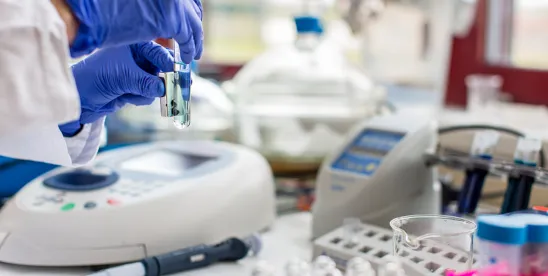We’ve been closely monitoring the administration’s enhanced focus on the same. As discussed in greater length in that article, key players in the new administration, such as Health and Human Services (“HHS”) Secretary, Robert F. Kennedy, Jr. (“Secretary Kennedy”) – who spoke publicly about this initiative even before his appointment and, soon after he was appointed, assembled a roundtable of government and industry personnel to discuss ways to reduce the regulatory burden for stem cell therapies soon after he took office[1] – have been vocal about the need to lower barriers to market entry for stem cell manufacturers.
However, to date, we haven’t seen any actual policy movement in furtherance of this initiative – at least not any formal policy movement. What we have seen is an interesting collection of administrative actions which could suggest that the U.S. Food & Drug Administration (“FDA” or the “Agency”) is laying the groundwork for a change in direction of its regulatory scheme for human cell and tissue products (“HCT/Ps”) – a regulatory category that includes stem cells.
On June 5, FDA hosted another cell and gene therapy roundtable, at which Secretary Kennedy asked industry participants outright which regulations they would like to see removed. Following this direct solicitation, conversations focused on strategies to accelerate the regulatory process for cell and gene therapies, especially as a way to bring product development back to the U.S. from countries like China.
Next, as reported by AgencyIQ, on June 13, FDA’s Center for Drug Evaluation and Research (“CDER”) updated its list of biological compliance programs and, without putting out any kind of notice, quietly removed its compliance guide titled, “7341.002A: Inspection of Tissue Establishments.”[2] While there are a number of reasons that CDER could have removed this compliance guide (e.g., perhaps it included directives related to diversity, equity, and inclusion (“DEI”) that are prohibited under the new administration), we wonder whether this might be the first small policy domino to fall in a larger scheme intended to change the regulatory paradigm for HCT/Ps.
Only a few days later, FDA made a much more impactful policy play by placing Nicole Verdun and Rachael Anatol, the director and deputy director of FDA’s Center for Biologics Evaluation and Research’s (“CBER’s”) Office of Therapeutic Products – both of whom are recognized as top regulators in the cell and gene therapy space – on administrative leave. Although CBER Director, Vinay Prasad, did not publicly explain decision to place the pair on administrative leave, it is rumored to be attributed, at least in part, to disagreements over the regulatory review of the Capricor cell therapy.[3]
Interestingly, Congress made a move last week that seemingly counters any deregulatory efforts that may be underway for HCT/Ps at the Agency when the House passed the Shandra Eisenga Human Cell and Tissue Product Safety Act, a bill that would increase civil penalties for violations of HCT/P regulations related to donor screening and current good tissue practice (“cGTP”).
Although it’s too soon to predict how these pieces might fit together, we’ll be watching this space closely for further updates and suggest that industry participants do the same. Any change in the regulatory structure for HCT/Ps, including stem cells, will be impactful for developers with HCT/P therapies in the pipeline and could be especially interesting if we end up seeing tension in the regulatory approach between different branches of government. More to come!
FOOTNOTES
[1] See X Post, Robert F. Kennedy, Jr. (Oct. 25, 2024); RFK Jr. Convened Roundtable around Ways to Reduce Stem Cell Regulation, Endpoints (Mar. 14, 2025).
[2] We remind readers that FDA refers to establishments involved in the manufacturing of HCT/Ps as “Tissue Establishments.” See, e.g., 21 CFR Part 1271; FDA Webpage – Tissue Establishment Registration.
[3] The Capircor cell therapy is designed to improve heart function in people with Duchenne muscular dystrophy. See, e.g., Disagreements over Duchenne therapy, management style may have led to ouster of key FDA official, STAT News (June 20, 2025); X Post, Sarah Karlin-Smith (June 19, 2025).




 />i
/>i

